In artist's imaginations... and movies as well, there seems to be this idea that the ruins of a civilization that are 12,000 years old (or even 6 thousand years, if you want to be conservative to start), will just be laying there at the bottom of the ocean and all you gotta go is snorkel past one to find it. Yet, there has never been ANY ruin found, of ANY age, that hasn't been covered in a ton of dirt. So why wouldn't buildings at the bottom of the ocean be covered in dirt? On the side of a mountain that is submerged, yes. you can find uncovered ancient ruins (like with Japan below). But that whole area is pure rock. The Atlantic is pure mud.
In this case, the above quote means simply, 'we like to believe what we have always believed and don't like change'.
The Sphinx before being excavated...
The Stone Statues in Easter Island have bodies !
This is absolutely incredible. Here we've been thinking for all these years that they were just heads. They are going to be absolutely huge when they are completely excavated. It all just adds to the mystery of these amazing sculptures. Maybe now they can get more information about them seeing as they have writings on them.
UNEARTHED: Massive carved stones about 11,000 years old... pre-dating Stonehenge by some 6,000 years!
"Six miles from Urfa, an ancient city in southeastern Turkey, Klaus Schmidt has made one of the most startling archaeological discoveries of our time: massive carved stones about 11,000 years old, crafted and arranged by prehistoric people who had not yet developed metal tools or even pottery. The megaliths predate Stonehenge by some 6,000 years. The place is called Gobekli Tepe
The tallest pillars tower 16 feet and, Schmidt says, weigh between seven and ten tons. As we walk among them, I see that some are blank, while others are elaborately carved: foxes, lions, scorpions and vultures abound, twisting and crawling on the pillars' broad sides."
Here are some images from the archeological site:
There are STILL at least 17 pyramids buried under the sands of Egypt...
Seventeen lost pyramids are among the buildings identified in a new satellite survey of Egypt.
More than 1,000 tombs and 3,000 ancient settlements were also revealed by looking at infra-red images which show up underground buildings.
Initial excavations have already confirmed some of the findings, including two suspected pyramids.
The work has been pioneered at the University of Alabama at Birmingham by US Egyptologist Dr Sarah Parcak.
Atlantis
Let me begin by observing first of all, that nine thousand was the sum of years which had elapsed since the war which was said to have taken place between those who dwelt outside the Pillars of Heracles and all who dwelt within them; this war I am going to describe. Of the combatants on the one side, the city of Athens was reported to have been the leader and to have fought out the war; the combatants on the other side were commanded by the kings of Atlantis, which, as was saying, was an island greater in extent than Libya and Asia, and when afterwards sunk by an earthquake, became an impassable barrier of mud to voyagers sailing from hence to any part of the ocean. The progress of the history will unfold the various nations of barbarians and families of Hellenes which then existed, as they successively appear on the scene; but I must describe first of all Athenians of that day, and their enemies who fought with them, and then the respective powers and governments of the two kingdoms. Let us give the precedence to Athens.(Some or most of the Dialogue of Critias has been lost)
Map of Atlantis based on Plato's descriptions, published in the New York American
on October 20, 1912 from Imagining Atlantis © 1998 by Richard Ellis.
This extract from the work of Plato (circa 427 - 347 BC) is the first appearance in classical literature of the Atlantis myth. It is supposed to be part of a story told by Plato's great grandfather (Critias), who heard it from his great-grandfather (Dropides), who heard it from an Athenian traveller (Solon). The narrator is an Egyptian priest talking to Solon. It is supposed to describe a historical war between the ancient Athenians and the legendary Atlantis.
[EXTRACT] 'Our records show how your city checked a great power which arrogantly advanced from its base in the Atlantic Ocean to attack the cities of Europe and Asia. For in those days the Atlantic was navigable. There was an island opposite the strait which you call the Pillars of Hercules (Straits of Gibraltar), an island larger than Libya (Africa) and Asia combined; from it travellers could in those days reach the other islands, and from them the whole opposite continent which surrounds what can truly be called the ocean. For the sea within the strait we were talking about is like a lake with a narrow entrance (the Mediterranean sea); the outer ocean is the real ocean and the land which entirely surrounds it is properly termed continent. On this island of Atlantis had arisen a powerful and remarkable dynasty of kings, who ruled the whole island, and many other islands as well and parts of the continent; in addition it controlled, within the strait, Libya up to the borders of Egypt and Europe as far as Tyrrhenia (Italy). This dynasty, gathering its whole power together, attempted to enslave, at a single stroke, your country and ours and all the territory within the strait. It was then, Solon, that the power and courage and strength of your city became clear for all men to see. Her bravery and military skill were outstanding; she led an alliance of the Greeks, and then when they deserted her and she was forced to fight alone, after running into direst peril, she overcame the invaders and celebrated a victory; she rescued those not yet enslaved from the slavery threatening them, and she generously freed all others living within the Pillars of Hercules. At a later time there were earthquakes and floods of extraordinary violence, and in a single dreadful day and night all your fighting men were swallowed up by the earth, and the island of Atlantis was similarly swallowed up by the sea and vanished; this is why the sea in that area is to this day impassable to navigation, which is hindered by mud just below the surface, the remains of the sunken island'
Translation by Sir Desmond Lee, first published 1965, Penguin Classics.
Although Plato describes Atlantis as an island in the Atlantic Ocean, and some Canarian writers have associated Atlantis with the Canaries, it is now generally believed that the Atlantis myth is a memory of Minoan Crete, a civilisation which was overwhelmed by the volcanic explosion of the Mediterranean island of Santorini in the fifteenth century BC.
Atlantis (in Greek, Ἀτλαντὶς νῆσος, "island of Atlas") is a legendary island first mentioned in Plato's dialogues Timaeus and Critias, written about 360 BC. According to Plato, Atlantis was a naval power lying "in front of the Pillars of Hercules" that conquered many parts of Western Europe and Africa 9,000 years before the time of Solon, or approximately 9600 BC. After a failed attempt to invade Athens, Atlantis sank into the ocean "in a single day and night of misfortune".
Scholars dispute whether and how much Plato's story or account was inspired by older traditions. In Critias, Plato claims that his accounts of ancient Athens and Atlantis stem from a visit to Egypt by the legendary Athenian lawgiver Solon in the 6th century BC. In Egypt, Solon met a priest of Sais, who translated the history of ancient Athens and Atlantis, recorded on papyri in Egyptian hieroglyphs, into Greek. Some scholars argue Plato drew upon memories of past events such as the Thera eruption or the Trojan War, while others insist that he took inspiration from contemporary events like the destruction of Helike in 373 BC[1] or the failed Athenian invasion of Sicily in 415–413 BC.
The possible existence of a genuine Atlantis was discussed throughout classical antiquity, but it was usually rejected and occasionally parodied by later authors. Alan Cameron states: "It is only in modern times that people have taken the Atlantis story seriously; no one did so in antiquity".[2] The Timaeus remained known in a Latin rendition by Calcidius through the Middle Ages, and the allegorical aspect of Atlantis was taken up by Humanists in utopian works of several Renaissance writers, such as Francis Bacon's New Atlantis and Thomas More's Utopia. Atlantis inspires today's literature, from science fiction to comic books to films. Its name has become a byword for any and all supposed advanced prehistoric lost civilizations.
The following is an example of someone promoting thier pet theory of where Atlantis is despite all evidence (or because of it? With such bad exposure and weird explanations that don't fit the facts, for anyone who is even a little Google competent, gives rise to paranoia, conspiracy theories and ultimately anarchy because of lack of trust. Only truth can solve that problem.). The interesting thing is that the key to understanding why they found this area of circular ruins underground is in the article (in bold). The funny part is that they only thought of Tsunami as a possibility after the Tsunamis that struck recently. Rising sea levels over thousands of years, till recently, has been the preferred theory as well as some Island that was covered in a volcanic eruption some 3000 years ago. I sometimes feel like if there isn't a cover up then we are dealing with some of the dumbest people known to man... who should not be allowed to teach in any respectable university.
NORTHAMPTON, Mass. — A U.S.-led research team may have finally located the lost city of Atlantis, the legendary metropolis believed swamped by a tsunami thousands of years ago, in mud flats in southern Spain.
"This is the power of tsunamis," head researcher Richard Freund told Reuters.
"It is just so hard to understand that it can wipe out 60 miles inland, and that's pretty much what we're talking about," said Freund, a professor at the University of Hartford who led an international team searching for the true site of Atlantis.
To solve the age-old mystery, the team analyzed satellite imagery of a suspected submerged city just north of Cadiz, Spain. There, buried in the vast marshlands of the Dona Ana Park, they believe that they pinpointed the ancient, multiringed dominion known as Atlantis.
The team of archaeologists and geologists in 2009 and 2010 used a combination of deep-ground radar, digital mapping and underwater technology to survey the site.
Freund's discovery in central Spain of a strange series of "memorial cities," built in Atlantis' image by its refugees after the city's likely destruction by a tsunami, gave researchers added proof and confidence, he said.
Atlantean residents who did not die in the tsunami fled inland and built new cities there, he added.
Standard approach to interpreting Plato's description of Atlantis is that the Egyptian Papyrus writings couldn't hold writing (magically I assume - or they thought Egyptians were just messing with Plato's head) ... and ancient people were so fickle out that an overflowing river would give rise to beliefs of a world wide deluge.
[From "The Encyclopedia of Science" on The legend of Atlantis] any fantastic stories from the past must have built up around natural phenomena that were beyond the power of people at the time to explain in rational terms. Dramatic reports from individuals who narrowly escaped a violent catastrophe of nature or who witnessed its effects from afar would have been eagerly seized upon by others and quickly exaggerated beyond all recognition. It seems at least possible that one the most fabulous legends of the western world may have come about in this way.
So much has been written and surmised about the "lost continent" of Atlantis in recent decades that it's easy to forget that the whole tale rests upon just one source of highly uncertain provenance: a description by Plato in his Timaeus and Critias. Plato claims, in these writings, that the story came to him by way of various intermediaries from his ancestor Solon who learned it, in turn, from Egyptian priests in 590 BC.
Some 9,000 years earlier, according to the legend, there was an island metropolis, roughly 32,000 square miles in area, lying beyond the Pillars of Hercules (the modern-day Straits of Gibraltar). It was dominated by hills and surrounded by two concentric rings of land, linked by bridges and roads. The water separating the rings formed extensive harbors connected by canals 150 feet deep and 500 yards wide. The vegetation was luxuriant, the land fertile and self-sufficient, and there were both hot and cold freshwater springs. Black, white, and red stones were quarried from beneath the central hill, leaving a natural roof for the inner harbor. The Atlanteans lived securely and comfortably in their island paradise – until, suddenly, disaster struck. According to Plato: "Through violent earthquakes and floods, in a single day and night of misfortune ... [the whole race] ... was swallowed up by the Earth and the island of Atlantis ... disappeared into the depths of the sea."
If a researcher doesn't believe what Plato has written in the Critias AND has done no other research (or is just an idiot)... he will assume that outside of the Straights of Gibraltar means inside and 9000 years ago means 1000 years ago...
Often EVERY Ancient Underwater Ruin Is ASSUMED to Be Atlantis By Their Discoverer!
The simple reality is that there are underwater ruins EVERYWHERE...
Underwater Ruins Off The Coast Of India

"The so-called Harappa stage of the great cities of Mohenjo-daro, Chanhu-daro, and Harappa (c. 2500-1200/1000 B.C), which bursts abruptly into view, without preparation, already fully formed and showing many completely obvious signs of inspiration from the earlier high centers of the West (i.e. fertile crescent), yet undeniable signs, also, of a native Indian tradition – this too already well developed. As professor W. Norman Brown has suggested, a native Indian center (i.e., a mythogenetic zone) somewhere either in the south or in the Ganges-Jumna area would seem to be indicated, where the characteristically Indian traits, unknown at this time farther west, must have come into form. [JC1 - Page 435]
Other interesting facts about the cities of Mohenjodaro and Harappa is that the bricks used in making them are uniform, i.e. they had a system to measure and weigh stuff accurately. They had their own sewage system, public baths and the structure of the architecture suggest an egalitarian society, but there are no signs of architectural development. That means these cities arrived fully developed and then went into decline. There are no in-between cities or towns where the Mohenjodaro/Happan style of architecture is first used.
With the discovery of ancient cities off the coast of India, the sudden appearance of Mohenjodara and Harrapa makes more sense. Cities that existed before a rise in the oceans(that began at the end of the last ice age) would explain the sudden appearance of cities like Mohenjodaro and Harrapa;
"The carbon dating of 7500 BC obtained for the wooden piece recovered from the site changes the earlier held view that the first cities appeared in the Sumer Valley [in Mesopotamia] around 3000 BC," said B Sasisekaran of India's National Science Academy.The images gathered over the past six months led to a surprising discovery - a series of well-defined geometric formations were clearly seen, spread irregularly across a nine-kilometre (five-mile) stretch, a little beneath the sea bed.
Some of them closely resemble an acropolis - or great bath - known to be characteristic of the Harappan civilisation.
The Gulf of Cambay is one of the largest tidal areas in the world - with a current of very high velocity - and so it is conceivable that the area may well have submerged an entire ancient settlement, Mr Ravindran said to the BBC.
There is undeniable evidence - i.e. you can see it for yourself - that there was a civilization or at least a bunch of advanced cities along the coastline before the end of the last ice age (about 12,000 years ago).
Underwater Ruins of Yonaguni Jima Off The Coast Of Japan
Most alternative archeological researchers seem to believe that there was a technologically advanced civilization who built their structures in stone that existed at the end of the last ice age, when the sea levels were over a hundred feet lower than today. Since the biggest cities are always built on the coast, the place to look for ancient cities would be the levels at which the ocean used to be at before all the ice melted(approx 9500 BC).
However, even without taking such extreme dating ideas seriously we can see that there are definitely underwater ruins strewn all over the planet. Since the ocean levels are thought to have gone up and done with mini ice ages, it may be that we had civilization earlier than we thought just not as early as some like to believe.
Take a look at the following pictures of possible staircases and other structures that must be man made...
A Japanese Study Has Confirmed That The Age Of These Ruins Is Approximately 10,000 Years!
Abstract;Submarine research surveys using SCUBA and sonic surveys reveal detailed topography similar to submarine, pyramidal features looking like a stepped pyramid off Yonaguni in Okinawa, Japan. The site is called Iseki Point(ruins site) as a leisure diving spot. Yonaguni Submarine Pyramid(YSP) is the major structure that stands under approximately 25 meters of ocean. Essentially, it has a cliff face like the side of a stepped pyramid, and dimensions of about 290m(length) by 120m(width) by 26m(height). Flat terraces, straight walls and its surface structure of walls with scars of tool marks driven in by a wedge on the structure are identified to be artificially fabricated. Appearance and size of YSP are similar to the biggest, ancient castles such as Shuri and Nakagusuku Castles in Okinawa Island, where they are called 'gusuku'. Roads associated with drainage canals were recognized, surrounding YSP, and that a retaining wall was found along a road. The southern point of the wall is composed of huge rock fragments. Stone tools and other artifacts were discovered from the sea bottom. Those evidence strongly shows that the YSP has not been manufactured by nature. It is identifie to be man-made. The formation age is estimated to be about 10,000 years ago based on 14C and 10Be age determinations. (author abst.)
In all likelihood, Atlantis was just one island/culture amongst MANY. Just like the United States is one country amongst many. Every country is at different technological level all the way down to people living in grass skirts roaming in the deserts of Africa who think glass is an advanced creation.
While the Indian civilization was slowly inundated, at least in part... Atlantis was said to have been swallowed by earthquakes and the ocean in one night. Could such a thing happen today? Yellowstone park is actually a super-volcano... and California is constantly quaking. So the answer is yes. Anything is possible, especially when we live on a super volcano and are helping to create earthquakes which can lead to Tsunamis. Think about it. New York City, Staten Island and New Jersey were torn apart by a category 1 storm. What if there was a real storm? Category 3 or 4? The fall of civilization or a city can be quick and abrupt.
Deep underwater, in the Atlantic, structures have been found. The structures are way too deep to have been built even during the ice age. It seems that, that area may have sunk! i.e. " there were earthquakes and floods of extraordinary violence, and in a single dreadful day and night all your fighting men were swallowed up by the sea and vanished" Plato in The Critias
The Bimini Road/Wall Or The Road To Atlantis? [Another confirmed ruin leading into the Atlantic ocean though it may be more recent.]
[From Dive Spots] The Atlantis Road, or Bimini Road is one of the most popular tourist attractions in Bimini because of the mystery surrounding the site. In the 1930s, an American psychic named Edgar Cayce reported that he had spoken with a person who had lived in the Lost City of Atlantis in a former life. This Atlantean told Cayce that Atlantis had been near Bimini. Cayce predicted that portions of the temples of Atlantis would become visible near Bimini in '68 or '69. When a private pilot flying over the waters near North Bimini reported seeing a strange parallel structure in shallow water, many people believed these were either walls from Atlantis or a mysterious road leading to Atlantis. And thus the mystery of the Atlantis Road was born.
Since the 1970s, the structure has been explored by thousands of visitors, filmed for several TV specials, written about in books and magazines and drilled into by geologists. Eugene A. Shinn led a team of geologists who core-drilled the rocks and determined that the stones are submerged, natural beachrock that is the same as the beachrock found on nearby North Bimini. In spite of his findings, there are still many who believe that the two rows of parallel stones were placed in the "road" formation by intelligent beings.
The rectangular stones lie in 15 feet of water just a mile offshore of North Bimini. The stones are straight and certainly look as if they were placed in a wall or road. The site is a regular stop on all the dive charters. It is easily explored by snorkelers and divers. Whether you believe the stones are linked to the Lost City of Atlantis or merely just an interesting natural rock formation, the Atlantis Road is a fun divespot.
A through investigation that refutes the above refutation (yes, I know it sounds funny) has been done by Greg Little called "Underwater Stone Formation At Bimini: Ancient Harbor Evidence" (since I got the pdf by email I uploaded it to my own Google account for easy access).
Best part of the Bimini structure is that it is easily explored by American divers and someone with time and money on their hands could do a deep sea survey of the general area and might find more structures buried underneath (deep sea sonar and satellite scanning is a way to get started). Although the PDF suggests a date around 9500BC, the type of stone structures found have been found in the Mediterranean as well. Thus this could be an ancient pier made when the ocean was lower during a mini ice age and not necessarily the big ice age 12000 years ago. The dominant theory is that it was a mid-way harbour to get to the underwater ruins of Cuba. Probably from a city that existed around the same time the height of the Mesopotamian Civilization (before the seas rose again).
Given the ludicrous amount of evidence we have on ancient civilizations and underwater ruins, why arn't the history books being updated? Well, the archaeologists have been through years of training. They now believe their theories, which were ALL learnt from a textbook NOT experience, as if it's scripture.
Yet, in todays 'modern' academic world, from which all our theories on the structure of the worlds cultures and economy come from, is heavily fragmented into specialized fields of knowledge. This leads to problems in comming to agreement about simple facts and theories making progress on the more intricate theories and studies almost impossible (except by a tiny group of degree holders which tend to be called 'alternative' and relegated to the edges of mainstream science and media).
During the renaissance the scholars studied every field of knowledge. In fact, major break-throughs in science tended to come from individuals not directly linked to science for most of the history of science. It was only when the math became so complicated that specialized mathematical skills were required that 'lay men's' theories about the specific implication of mathematical formula became useless. For contradicting religious doctrine many Renaissance age scholars learned the hard way to avoid to contradict the church and over time an agreement was reach between the church and the new form of specialized knowledge that came to be known as 'scientists'. The agreement was simple, scientists will focus on observable phenomenon and avoid studying matters of faith and religious belief. So the modern enlightenment, or reemergence of ancient knowledge, began crippled. It's why I think A. N. Whitehead, (Process and Reality, 1929), is right when he says that all of modern western philosophical thought is a footnote to the works of Plato."The safest general characterization of the European philosophical tradition is that it consists of a series of footnotes to Plato". It had to be. Plato could consider fields of knowledge that became socially and culturally unacceptable from about the 1700's to today's extremely fragmented state of academia, creating a type of scholar which gives scholarship a bad name.
A better type of scholar for understanding the complexity of science and the connection between the various fields of knowledge is Leonardo Da Vinci. A genuine liberal arts education with accurate textbooks could help generate more such scholars in the long-term (needs to be combined with better media influence as well).
The video below is of an interview of a modern 'ethical' philosopher. It is obvious that he believes that only he can ask and ponder the questions he has even when Stephen Colbert (a non-philosophy or economics degree holder) makes a brilliant case for the inaccuracy in one of his theories. (Note: This overspecialization of knowledge, particularly the division of 'ethicality' from other aspects of knowledge is something that Robert Pirsirg ranted about in his book "Zen and The Art of Motor Cycle Maintenance" attributing this problem to Plato and Aristotle, which could very well be correct).
Note that Michael's question about why baseball players get paid more than teachers is something you could explain to a 10 year old. It is easier to teach little kids than it is to throw 100 mile per hour fast balls or hit these fast balls out of the playing field. If all teachers could compete with modern baseball athletes on their level ONLY then could such a question be valid. The simple reality is that the skill that is rare gets paid more for. This is simple demand and supply economics (as Colbert points out) - Also note that I have a degree (bachelors) in economics which gives my simple explanation more weight but I prefer to use links to authoritative information as I think every writer in any field of knowledge should. Also note that he simply ignores Colbert's accurate counter response hiding behind the degree by saying roughly. ' this is a question for ethical philosophy' implying Colbert can't understand this particular field of philosophy (after all, the argument is, 'I have a degree in this, you don't'). Its not Michael's fault he doesn't know economics. It's not a requirement for knowledge (specialization begins right at the beginning at college level education and school textbooks are grossly out of date), he is illustrating a symptom of a much larger cultural problem (fragmentation of knowledge) which must be addressed and is the main point of all my blogs (the idea being to combine news media and education to create larger perspectives on modern challenges).
One of the most fragmented fields of knowledge is the one of archeology. The skills of excavation (or more accurately, patience?) have reached a new high but putting together the finds in a proper theoretical framework based on all available evidence, that has been confirmed as reliable, has broken apart to such a degree that cults seem to have formed around different theories. This seems to have made the support of various archeological theories (and evidence associated with it) a political and religious issue.
Introduction to the modern archeology problem
Professor Israel Finkelstein, of Tel Aviv University, pointed out that the remains are not evidence of a powerful biblical state.
He said: "We are not talking about some great empire ruled from a wonderful capital, the way we look at Assyria in the 9th century B.C., or even the northern Kingdom of Israel in the 9th century B.C. We are here in a formative phase of the rise of Judah."
Finkelstein added: "Khirbet Qeiyafa does not make Judah a great empire with great armies."
Garfinkel argued that even if it was not the great empire of the bible, its existence is significant.
"What people try to do is say that the Kingdom of Judah didn't exist," he said. "What I am saying is that it existed. It's a small one, not so glorified as the Bible presented. But it doesn't mean there was nothing."
Here are a few extracts from websites of mainstream archeological theories about the age of civilization (not in line with Darwin's theory of evolution... please note that my visual explanation below of the variations of skull shapes and sizes nullifies much of the evidence cited by Darwinians. This does not mean that the theory is wrong, just that, like any scientific theory, it is a theory 'in the works' and does explain many natural phenomenon but not all archeological and observational evidence).
Website example 1: CIVILIZATION BEGINS: THE COPPER-STONE AGE, 3600-2800 B.C.
Website example 2: By 6500 B.C.E., humans secured for themselves a dependable food supply by planting crops and domesticating animals. As a result, the human population increased, food surpluses allowed for economic specialization and exchange, and the emergence of civilization was made possible.[The problem with the second theory statement is the large structures that have been found with no obvious settlement, i.e. large structures require a large population to make them. The idea of these structures being religious don't fit the evidence found thus far so shouldn't be put into that category - click here to read my theory]
The following is the more religious version of the theory of evolution (Christian source):
First, even though some people believe that evolution is correct, and that men evolved from animals, that does not make it right. People believe all kinds of things that are wrong. Humans did not "evolve," but were created specially by God (Genesis 1:26-27).
Second, the fact that a person lives in a cave has nothing to do with whether or not he or she is human. Saying that a man who lives in a cave is "half human" would be like saying a dog that lives in the house is "half human." The place where you live does not determine your "humanity."
Third, the Bible explains that people of the past lived in caves for various lengths of time, and for various reasons.
There are some attempts to bring together the religious idea of creationism with it's opposite, the theory of evolution. The basic theory tends to be along the lines of 'God create man with the capacity to evolve and change for various reasons and that is why we find so many variations of human beings in fossils'.
[Click here to read an excellent example of bringing together a faith based idea in-line with a modern scientific perspective]
Amongst some Christian religious scholars there is even an attachment to a literal interpretation of the meaning of the word "day" in the first two books of Genesis. Amongst the more reasonable and open minded this can be countered with a New Testament quote, "But, beloved, be not ignorant of this one thing, that one day is with the Lord as a thousand years, and a thousand years as one day." 2 Peter 3:8
The Death Of Observational Science
The Colbert Report
Get More: Colbert Report Full Episodes,Political Humor & Satire Blog,Video Archive
Paleoanthropologist Chris Stringer shares his book, "Lone Survivors: How We Came to Be the Only Humans on Earth." (05:42)
Notice how the above palaeontologist classifies people by brain size and species according to which region they live in. By that logic asians, whites, blacks, browns, aboriginal ... ALL represent different species of humans. This isn't a theory, it's a cult. Let me explain using simple images where you can see that different brain sizes or shapes of human being doesn't mean you're a different species. That seems to be a racist argument by the archaeologists of the 19th Century which has now become dogma.
All ancient human classifications are based on a few fossils and the variations in skull shape and size seem to be within modern day variation of our species to some extant [there is also mention of a bone here or there which is supposed to be further evidence of an evolutionary change but the main arguments are based around the skull sizes and the size of the brain that these cranial cavities could hold]
"Archaic forms of Homo sapiens first appear about 500,000 years ago. The term covers a divers...e group of skulls which have features of both Homo erectus and modern humans. The brain size is larger than erectus and smaller than most modern humans, averaging about 1200 cc, and the skull is more rounded than in erectus. The skeleton and teeth are usually less robust than erectus, but more robust than modern humans. Many still have large brow ridges and receding foreheads and chins. There is no clear dividing line between late erectus and archaic sapiens, and many fossils between 500,000 and 200,000 years ago are difficult to classify as one or the other. "
Here is a graphic example of this theory (the one on the right is supposed to be Neanderthal)...
Yes, for Neanderthals in particular but it applies to all theories connecting humans to apes and other species through skull sizes, for example: pygmies will have smaller heads than a gorilla but its doesn't mean a gorilla is smarter, ...
ScienceDaily (Aug. 16, 2007) — Chance, not natural selection, best explains why the modern human skull looks so different from that of its Neanderthal relative, according to a new study led by Tim Weaver, assistant professor of anthropology at UC"For 150 years, scientists have tried to decipher why Neanderthal skulls are different from those of modern humans," Weaver said. "Most accounts have emphasized natural selection and the possible adaptive value of either Neanderthal or modern human traits. We show that instead, random changes over the past 500,000 years or so – since Neanderthals and modern humans became isolated from each other – are the best explanation for these differences."
Weaver and his colleagues compared cranial measurements of 2,524 modern human skulls and 20 Neanderthal specimens, then contrasted those results with genetic information from a separate sample of 1,056 modern humans.
The scientists concluded that Neanderthals did not develop their protruding mid-faces as an adaptation to icy Pleistocene weather or the demands of using teeth as tools, and the retracted faces of modern humans are not an adaptation for language, as some anthropologists have proposed.
Instead, random "genetic drift" is the likeliest reason for these skull differences.
Problem with this skull size and shape theory is that these variations occur even today, yet according to archeologists we are supposed to be one species of humans of different races while the humans of the past are supposed to look like apes.
Take a look at examples of individuals with different skull sizes, both in one race and across different races. You can carry out these observations across many segments of modern populations and you will find these variations in skull size and shape are very common. Do you think we are all human or are we representing different species of people?
If we are to believe the nonsense that is coming out of the mouths of modern academics about Neanderthals (and with it early human history) then we would have to name Dwayne Johnson’s species Homo Rockathalis and Jackie Chan’s species Homo Chanathalis. Since the one with the bigger skull is the supposed to be the dumb one that means that Rockathalis is a dumb species (Note to The Rock: This is what the academics are saying not me). While Chanathalis is the smart one that has learned how to speak and cook. Shaq's comes from yet another Neanderthal type species. The whole theory of different species of humans that is now one species is just stupid (I would say it's outdated, but it became outdated in the 1960's, now it's just ridiculous)
History: The earliest evidence of culture
Our recent archeological discoveries are simply mind-blowing and though there is currently no evidence of wooden jewelry or wooden musical instruments (how difficult would it be to make a wooden lute/guitar with a box and some appropriately prepared animal hair?) from our deep deep past, we may yet find some as the following presentation of evidence and examples will show.
Wood does decay but it also gets preserved by accident. First take a look at this 10,000 year old wooden spear-like object found in some melting ice:
Next consider the wooden spears found even longer ago (400,000 years!)
Gamble cites wooden spears found preserved in a bog at Schöningen, Germany, and are associated with horse bones. Dated to 400,000 years ago, the spears provide the first hard evidence of human hunting and are weighted at the ends to be thrown like a javelin.
"I just wonder whether the Schöningen spears were ever used. Yes, there are horses at the site, but are the tips of the spears damaged? You'd think spears like that would break after they'd been jammed in a few horses," muses Gamble. For heidelbergensis, tools and hunting weapons may have played an important role in social display, one that we don't yet fully understand and may even border on ritual.
"They may have been more interested in making things as a demonstration of who they were and what was important to them. Killing horses was probably something they did once a week," Gamble remarks.
"It is very hard to get colleagues to accept evidence of ritual for early humans," says Bermúdez de Castro. BBC
To say there are signs of ritual or culture is one thing but to actually begin to describe how they must have performed a possible ritual is a little absurd. To compare with modern tribes in some way to draw some logical conclusions about possible meanings of the rituals or possible lifestyles of ancient humans is more appropriate.
No matter what we now know that ancient man did use wood in hunting and probably in other spheres of life. Since wood is easiest to form or build with it is possible that every stone advance came after a development that was earlier and based in wood.
For example, check out this hunter-gatherer group, their 'huts' are made solely of wood and leaves;
The article explains;
Because humans lived as hunter-gatherers for 95 percent of their species' history, current foraging societies provide the best window for viewing human social evolution, according to the authors. Given that, the researchers focused on co-residence patterns among more than 5,000 individuals from 32 present-day foraging societies around the globe, including the Gunwinggu, Labrador Inuit, Mbuti, Apache, Aka, Ache, Agta and Vedda.
A major point in the study is that foraging bands contain several individuals completely unconnected by kinship or marriage ties, yet include males with a vested interest in the offspring of daughters, sisters and wives.
"The increase in human network size over other primates may explain why humans evolved an emphasis on social learning that results in cultural transmission," said Hill. "Likewise, the unique composition of human ancestral groups promotes cooperation among large groups of non-kin, something extremely rare in nature."
The group's findings appear in the paper "Co-Residence Patterns in Hunter-Gatherer Societies Show Unique Human Social Structure." It is the first published analyses of adult co-residence patterns in hunter-gatherer societies based on census data rather than post-marital residence typologies, Hill noted.
Notice how flexible these groups of human are. They aren’t bound to a small tribe for life but rather a system of tribes that together form a large social system. Here we find a modern counterpart to what an ancient culture of small hunter-gatherer groups could look like.
In fact, even in the large cultural groupings of the North American Apaches or Sioux or Cherokee we can see possible echoes of an ancient system of cultural organization that maximized the resources of the land and the practice of the hunt by forming small groups that could live together without adversely affecting their food supply. They use stone but notice how much of their technology revolves around wood. At the same time these North American hunter-gatherers would have large social meetings where two or more small tribes celebrate some event. Could this be a practice that is natural to any human culture going back through the millennia?
What about the hunt? To hunt you need to track animal footprints, understand its habits, prepare a trap or have some skill in killing it effectively and have the ability to communicate this body of knowledge to youngsters, i.e. language. The Apache teach the whole role a youngster is expected to play using stories which we call their 'religion' or mythology. Every primitive tribe has such stories that explain and train the young ones. Why not ancient humans?
The theme of language and the hints of the existence of a human culture and society can be been clearly in the development of the hand ax, as Campbell explains;
All of which speaks volumes for the force and reach of diffusion in the primitive world.
Moreover, what is perhaps more remarkable still is that some of the most beautiful of the symmetrically chipped hand axes of this period are as much as two feet long, a size too cumbersome for practical use; the only possible conclusion being that they must have served some ceremonial function . Professor Coon has suggested that such axes were not practical tools but sacred objects, comparable to the ceremonial tools and weapons of later days, “used only seasonally, when wild food was abundant enough to support hundreds of persons at one place and one time. Then the old men,” he supposes, “would cut the meat for the assembled multitude with some of these heavy and magnificent tools,” after which, like the magically powerful tjurungas of the Australians, the sacred implements would be stored in some holy place. Primitive Mythology by Joseph Campbell, Page 364
The African finds that have most recently stirred the halls of science are roughly (very roughly) dated at the commencement of the Pleistocene or Ice Age, circa 600,000 B.C.; and at the Fifth International Congress of Anthropological and Ethnological Sciences, held at the University of Pennsylvania in 1956, Dr. Raymond Dart of Witwatersrand University, Johannesburg, South Africa, showed a convincing series of slides in which the implements of this pre-lithic (pre-Stone Age) culture were illustrated. These included the lower jaw bones of large antelopes, which had been cut in half to be used as saws and knives; gazelle horns with part of the skull attached, which showed distinct signs of wear and tear use, possibly as digging tool; and a great number of ape-man palates with the teeth worn down – human palates being used to this day as scrapers by some of the natives of the area. Primitive Mythology by Joseph Campbell, Page 359
In our time evidence of the use of jaw bones of animals to cut and eat meat (indicating the hunt was developed) goes back even further. The following extracts bring Joseph Campbell’s archaeological survey up to date. The last article I’m presenting in full as I think that it represents the border of our current archaeological acceptance of the existence of a species that has the distinct behaviour patterns that can be called human. Hunting (involving tool making such as wooden spears, the need for speech for communication of the techniques of the hunt and passing on of the art of the hunt – i.e. how to make the spears/arrows(?) or just a way to trap an animal and drop rocks on it or push it over a cliff), walking upright and taking care of the members of the tribe. Lucy, whose people are at the forefront of archaeological theory as the possible first humans, was found in the geological layer indicating an age of about 3 million years.
From About.com
The Stone Age (known to scholars as the Palaeolithic era) in human prehistory is the name given to the period between about 2.5 million and 20,000 years ago. It begins with the earliest human-like behaviours of crude stone tool manufacture, and ends with fully modern human hunting and gathering societies. The Palaeolithic is the earliest archaeology; anything older is palaeontology. Today scholars divide the Palaeolithic into three categories, more or less as follows. Lower Palaeolithic (sometimes called the Early Stone Age) The Lower Palaeolithic lasted between 2.5 million-200,000 years ago (or at least according to one permutation), and it was when the Hominin ancestors of human beings, including Australopithecus, Homo habilis, Homo erectus and Homo ergaster, roamed most of the earth and began making the first stone tools.
ScienceDaily (Feb. 11, 2011) — A fossilized foot bone recovered from Hadar, Ethiopia, shows that by 3.2 million years ago human ancestors walked bipedally with a modern human-like foot, a report that appears Feb. 11 in the journal Science, concludes. The fossil, a fourth metatarsal, or midfoot bone, indicates that a permanently arched foot was present in the species Australopithecus afarensis, according to the report authors, Carol Ward of the University of Missouri, together with William Kimbel and Donald Johanson, of Arizona State University'sInstitute of Human Origins. The research helps resolve a long-standing debate between paleoanthropologists who think A. afarensis walked essentially as modern humans do and those who think this species practiced a form of locomotion intermediate between the quadrupedal tree-climbing of chimpanzees and human terrestrial bipedalism.
Researchers working in Ethiopia's remote Afar region have recovered evidence that humans began using stone tools and eating meat far earlier than previously thought. The finds—cut-marked animal bones dating to nearly 3.4 million years ago—push the origin of butchery back a stunning 800,000 years. Furthermore, these ancient butchers were not members of our own genus, Homo, but the more primitive Australopithecus, specifically A. afarensis, the species to which the celebrated Lucy fossil belongs.
Scientists have typically viewed tool use as the purview of Homo. Indeed, in 1964 Kenyan paleoanthropologist Louis Leakey and his colleagues named the earliest Homo species, H. habilis ("handy man"), for its association with stone tools. Subsequent finds have since extended the evidence of stone tool use back to between 2.5 million and 2.6 million years ago. But exactly which member of the human family made and wielded these older tools was unclear, both because no human remains turned up in direct association with the tools and animal bones, and more than one human species lived in the area at this time. The earliest example of a clear association between humans and tools dated to 2.3 million years ago, and the human remains belonged to an early Homo species.
Still, archaeologists suspected that earlier stone tools remained to be discovered, because these examples seemed too advanced to represent humanity's first foray into tool manufacture. "Nearly everyone that works with the earliest stone tool industries at between 2.3 [million] and 2.5 million years has commented on the surprisingly high level of skill and understanding that we see in these early knappers. Most have predicted that something older will be found," says archaeologist Shannon P. McPherron of the Max Planck Institute for Evolutionary Anthropology in Leipzig, Germany.
That hunch helped motivate McPherron and his colleagues, who have been working at a site in the Afar region called Dikika—just a few kilometers from the Lucy site—to look in older geologic deposits in the area for earlier evidence of stone tool use or manufacture. They were rewarded with bones from two animals—one cow-size and another goat-size—that display cutmarks and percussion marks indicative of flesh removal and marrow extraction with stone tools. McPherron, along with Dikika Research Project leader Zeresenay Alemseged of the California Academy of Sciences and their collaborators, describe their discovery in an August 12 paper in Nature (Scientific American is part of Nature Publishing Group).
Because the earliest Homo remains date to just 2.3 million years ago, scientists can be certain that an australopithecine made the cut marks on the 3.4-million-year-old Dikika bones. And because the only human species that is known to have lived in the Dikika area during this time period is A. afarensis, it seems reasonably certain that this species in particular butchered the bones. (The A. afarensis remains found at Dikika include a spectacularly well-preserved skeleton of a youngster, popularly dubbed "Lucy's baby.")
Australopithecines had teeth and jaws that were in many ways adapted for eating fruit, seeds and other plant foods. "[The discovery] shows that meat was added to the diet earlier than we had thought," McPherron observes, although he notes that it is difficult to say what portion of the diet was meat. "We could now be looking at an extended period of time when hominins were including meat in their diet and experimenting with the use of stone tools."
Although the Dikika finds prove that A. afarensis was using tools, whether they were fashioning implements from stone or just picking up sharp-edged rocks from the landscape and using those to carve up the carcasses remains unknown, because no stone tools have turned up at the site. Future discoveries may resolve this question. They may also reveal the extent to which Lucy and her kin relied on stone gadgetry, setting the stage for developments that would profoundly impact the course of human evolution.
"This discovery dramatically shifts the known time frame of a game-changing behavior for our ancestors,"Alemseged remarked in a prepared statement. "Tool use fundamentally altered the way our early ancestors interacted with nature, allowing them to eat new types of food and exploit new territories. It also led to tool-making—a critical step in our evolutionary path that eventually enabled such advanced technologies as airplanes, MRI machines and iPhones."
History: The earliest evidence of ritual and myth
In Dreachenloch and Wildermannlisloch little walls of stone, up to 32 inches high, formed a kind of bin, within which a number of cave-bear skulls had been carefully arranged. Some of these skulls had little stones arranged around them; others were set on slabs; one, very carefully placed, had the long bones of a cave bear (no doubt its own) placed beneath its snout, another had the long bones pushed through the orbits of its eyes.
The cave in Germany, Petershohle, near Velden, which was explored by Konrad Hormann from 1916 to 1922, had closet like niches in the walls, which contained five cave-bear skulls – and once again the leg bones.
Now the cave bear, it must be told, for all its size, was not an extremely dangerous beast. In the first place, it was not carnivorous but herbivorous, and in the second place, like all bears it had to go to sleep in the winter. But during the ice age the winters were long. The bears would go into the caves to sleep and, while there, could be readily killed. In fact, a tribe of men living in the front part of a cave with a couple of sleeping bears in the rear would have had there a kind of living deep freeze. (Page 339)
The following article show us a little about the evidence we have of cave bears;
There is evidence that one species of bear has survived over another simply because they didn't live in caves as a normal part of their behavior pattern. Could this be because of the ancient cave bear cult that hunted this species of bear to extinction?
"The present day brown bear did not suffer the same fate and has survived until today for one simple reason -- brown bears did not depend so heavily on the cave habitat, which was becoming degraded, and this is why they did not follow the same pattern as the cave bears.
"Brown bears rely on less specific shelters for hibernation. In fact, their fossil remains are not very numerous in cave deposits," the Galician researcher says. The definitive extinction of the cave bear "broadly" coincides with the last cooling of the climate during the Pleistocene (between 25,000 and 18,000 years ago), which may have led to a reduction in shelter and the vegetation that the animals fed on.
The cave bear inhabited Europe during the Late Pleistocene and became definitively extinct around 24,000 years ago, although it held out for a few thousand years longer in some areas, such as the north west of the Iberian Peninsula, than in other places. This ursid was a large animal, weighing 500 kg on average, and was largely a herbivore. The bear hibernated in the depths of limestone caves, where the remains of individuals that died during hibernation slowly accumulated over time."
This suggests the possibility that if there was a ritual being played out in the ancient tribes of hunting the cave bear then there would be a large continuum of this culture with obvious signs of thier passing. And there is:
Vestiges of a circumpolar Paleolithic cult of the bear have been identified throughout the arctic, from Finland and Northern Russia, across Siberia and Alaska, to Labrador and Hudson Bay: among the Finns and Lapps, Ostyaks and Vogul, Orotchi of the Amur river region, Gilyaks, Goldi, and peoples of Kamchatka; the Nootka, Tlingit, Kwakiutl, and others of the Northwest American Coast; and the Algonquins of the Northeast. And so here is a northern circumpolar hunting continuum in counterpoise to tha broad equatorial planting belt which we traced from Sudan to the Amazon in Part Two. And just as there a certain depth of time was indicated, going back to perhaps c. 7500 B.C., the dawn of the proto-neolithic, so here too there is a depth in time – but how very much greater! For in the high Alps, in the neighborhood of St. Gallen, and again in Germany, some thirty miles northwest of Nurnberg, near Velden, a series of caves containing the ceremonial arranged skulls of a number of cave bears have been discovered, dating from the period (it is almost incredible!) of Neanderthal Man.(Joseph Campbell, Primitive Mythology page 339)
Here we come to the amazing possibility that Neanderthals could be JUST another race of human beings. Well, its kind of implied in the earliest signs of culture that there might be a continuous cultural continuum from ancient times to our own age but this is the first evidence we have of genuine culture and mythological thought. Before I begin my analysis of the evidence of deep thought in some human species, that may have been our evolutionary cousins, I would like to point out one simple fact; Whatever an artist's preconceptions of the Neanderthal lifestyle and intelligence may be it is likely that this perspective gets reflected into their illustrations of Neanderthals. Consider the following portrayals of ancient Neanderthal Man.
Some Neandertals may have had red hair and pale skin, just as some modern humans do, according to a new genetic study.
The traits were likely more common in European Neandertals (often spelled Neanderthals), just as they are often seen in modern humans of European descent.
[The woman in this video (Jenna Lee) fits the above description for Neanderthals, so I thought I would add her as a possible example of a Neanderthal woman - keeping in mind that the genetics from those times have been diluted quite a bit, but there still could easily have been red-haired women who weren't 6 feet tall with sloping foreheads.]
Again and again, we discover "anomalies" (stuff that makes no sense). Rather than covering it up, pretending it doesn't exist, sending up one satillite after another to Mars and forgetting to add a simple scooper to test for life (even though water on Mars is now confirmed... and was ALWAYS a part of the theory of how the Martian surface came to be that way)...
The Colbert Report
Get More: Colbert Report Full Episodes,Political Humor & Satire Blog,Video Archive
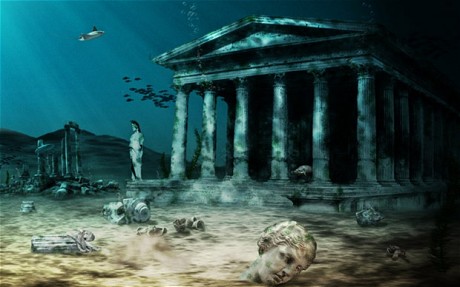
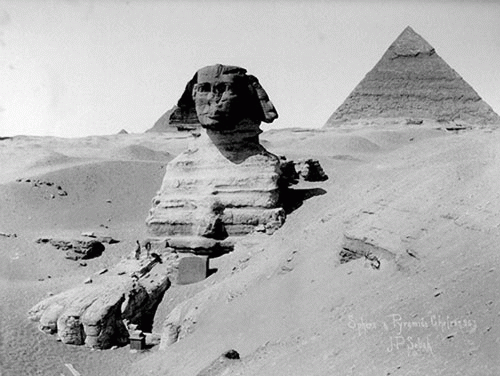
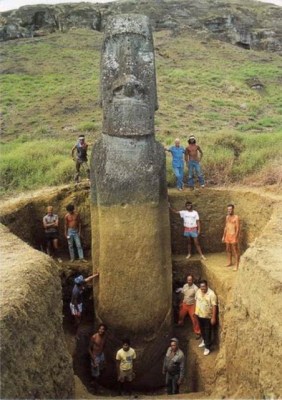
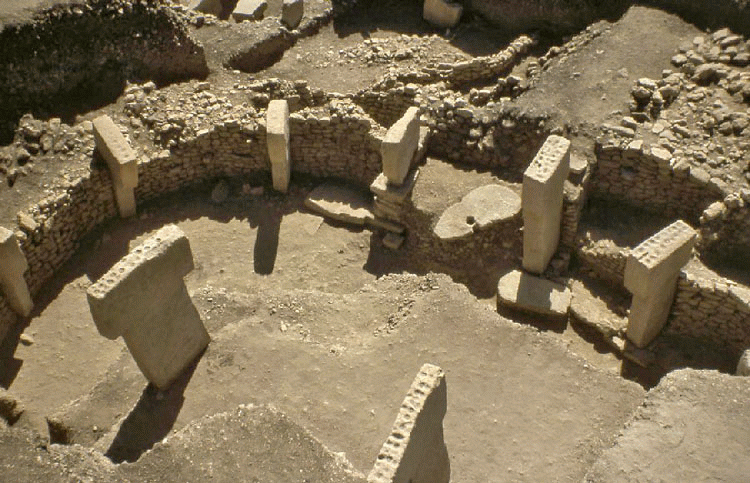
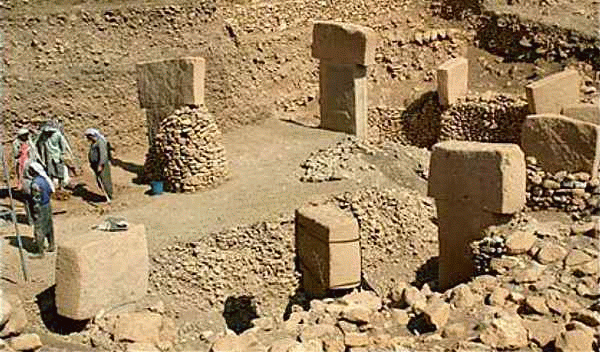
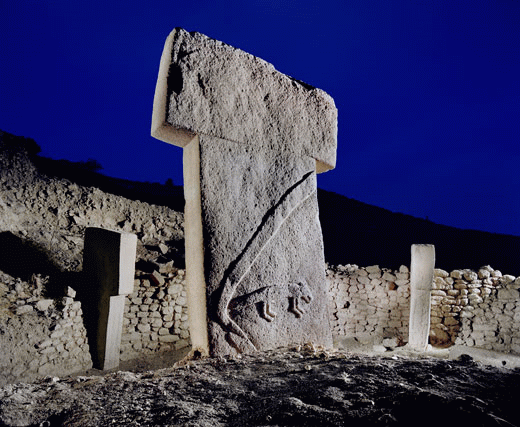

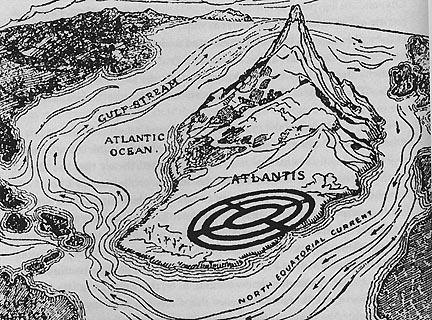
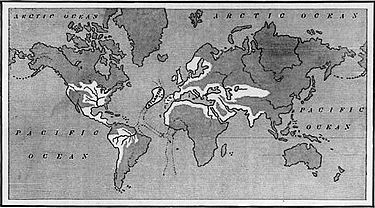
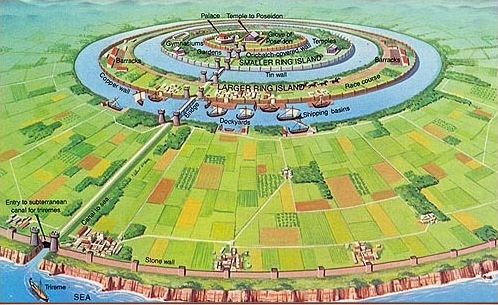
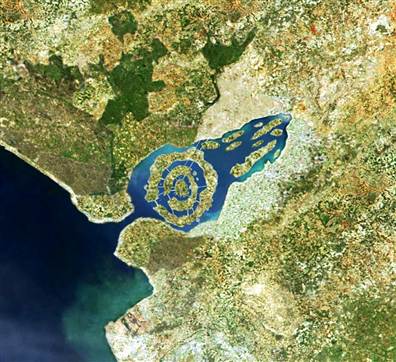

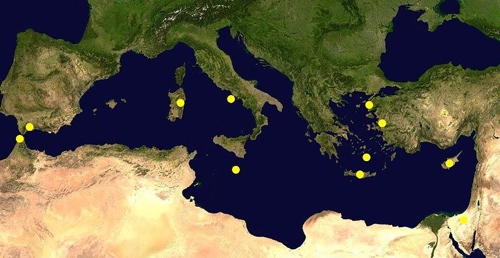
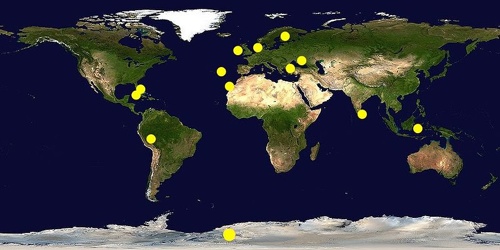
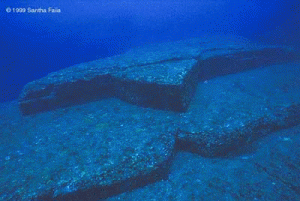
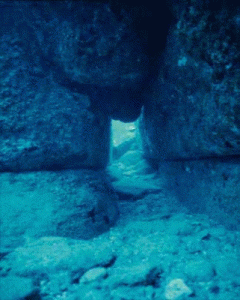
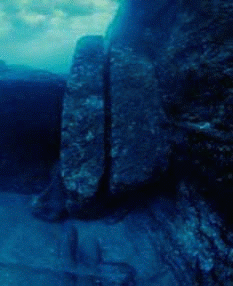
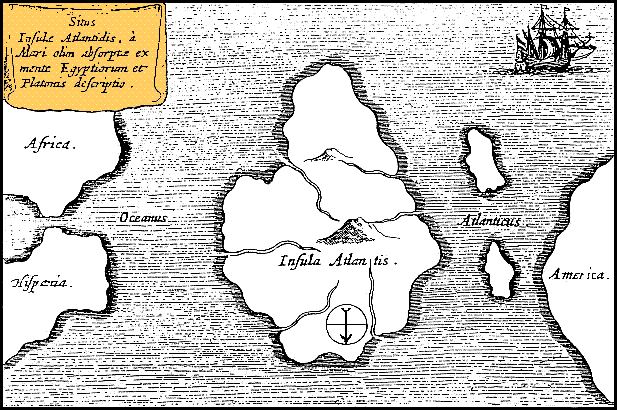
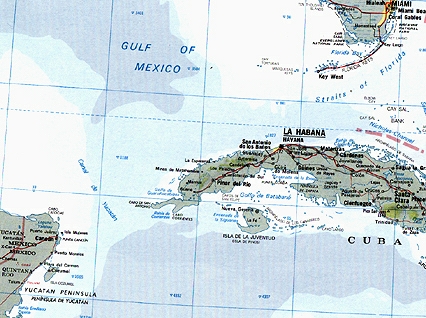


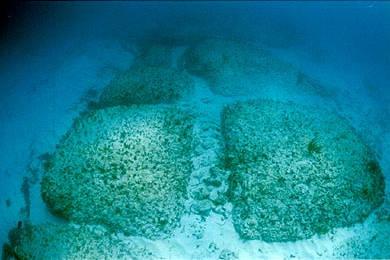
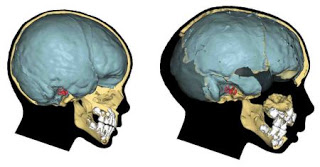





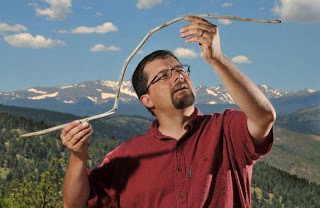

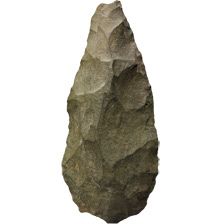
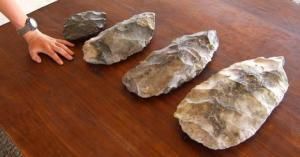
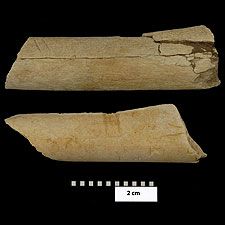
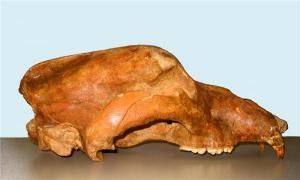
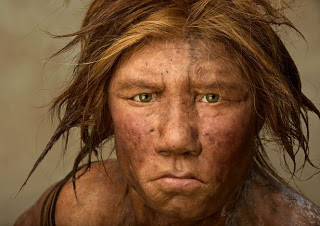
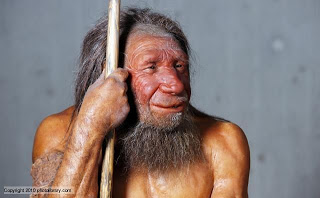
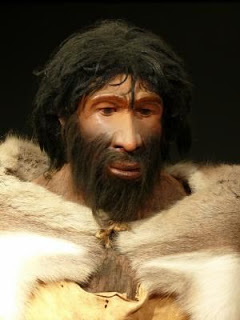

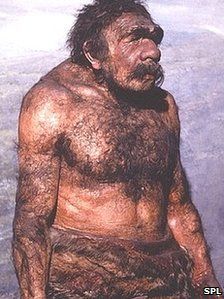

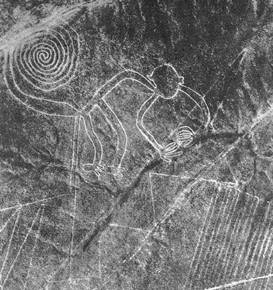
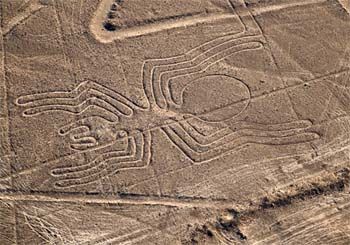
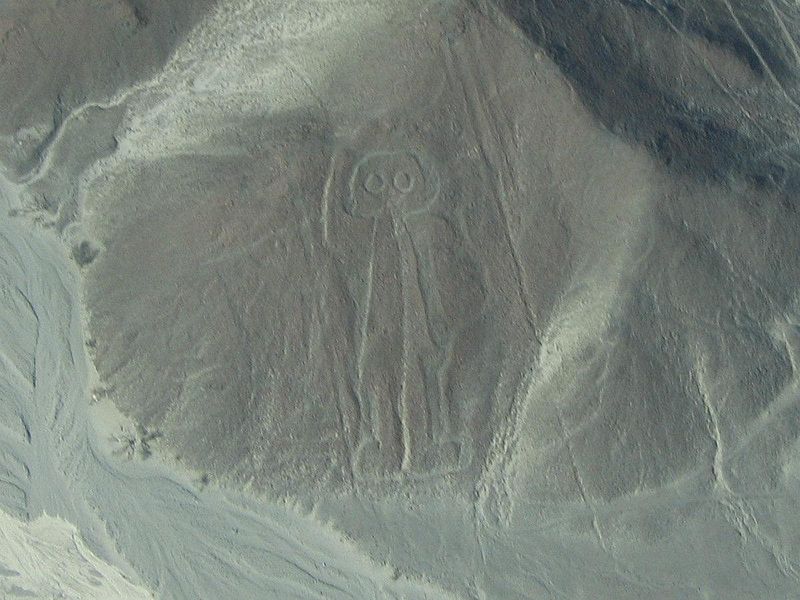

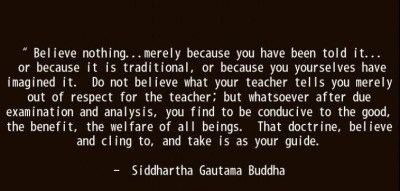



 RSS Feed
RSS Feed
